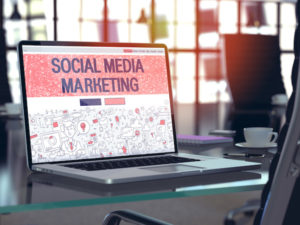We’ve all heard a great deal about AI, or artificial intelligence. Setting aside the sci-fi doom scenarios, we can see that AI can come in handy for aiding marketing campaigns.
AI in advertising Delivery
There was a time when well-funded marketing teams deployed sophisticated algorithms to maximize Return On Ad Spend (ROAS.) These tools are being replaced by artificial intelligence, which can not only respond to mathematical inputs but also adapt to them. The current state of AI is accessible to the average marketer, not just the well-funded programs. Google Ads has Performance Max campaigns which are fully automated and run by Google’s artificial intelligence.
The downside to AI in advertising is that it is another layer of black-box technology. While AI can likely get better ROAS, as a marketer, you will not be able to learn what is working and what is not. The AI collects assets not only from your inputs but also from your website. It generates ad copy, pulls in and manipulates graphics, and delivers ads to users. You will not know what combinations worked for which target groups. Indeed, in a fully AI-managed program, you would not even know who the target groups are. The downside is ignorance for the marketer; you know it worked or didn’t work, but don’t know why.
AI in copy development
Writing is an art and a science. To write well is to communicate information in a way that it is correctly and even enthusiastically absorbed. Since we all have differing perspectives on what is easy to read and absorb, this can make assessing the quality of AI-generated material more of an opinion than an objective measurement. There are some things that most will agree are poorly written, but deciding on what is good still remains perspective bound.
To get the most from AI in copy generation, it is best to have three things as input. 1) A well-defined topic. 2) A style of writing after which the AI can model the material. 3) Time to add your own input to the AI output. So far, AI-generated copy provides a decent foundation and a poor final draft. Plan on spending time with AI to refine its outputs and then add your own touches.
AI-Generated Programming
Perhaps not strictly a marketing topic, but creating websites with some functionality beyond basic HTML is common. Getting the content form and function is important to marketers who rely heavily on their websites (most of us do.) AI can be used to generate code snippets in HTML, Javascript, JQuery, and other languages. However, to do this, one still needs to have a basic understanding of programming in the specific language being used.
With a bit of education, marketers can use AI to help facilitate website functionality. You’ll not be able to replace a true programmer and are unlikely to do something beyond very basic functions. But, in a time when resources are constrained, AI generates code that can be helpful.
Using AI to Create Images
DALL-E AI is the basis for many image-generating AI tools. So far, the images are fun, but we have not seen truly usable images for marketing purposes (other than social media marketing.) However, it is likely just a matter of time before the modeling gets refined enough to do it.
What AI is getting good at is image editing. Adobe uses AI tools as a core part of its programs to help users edit images more quickly and with better accuracy than all but true professionals can do. But don’t think you can just go out and replace a good graphic designer. A key in graphic design is having an eye for what works together. AI still needs input to know where to apply its magic. If you don’t understand graphic design, you won’t be able to provide artificial intelligence programs with the proper input.
As AI becomes stronger and the interfaces become more intuitive, it will have a growing impact on marketing programs. But, for now, AI tools still need knowledgeable professionals to provide the right input, assess the outputs, and make the appropriate adjustments.


